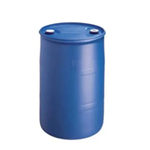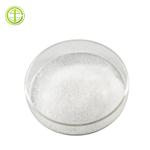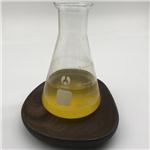- Triethylenetetramine
-

- $1.60 / 1kg
-
2024-04-28
- CAS:112-24-3
- Min. Order: 10kg
- Purity: 99%
- Supply Ability: 300tons
- Trientine
-

- $120.00 / 1Kg/Bag
-
2024-04-22
- CAS:112-24-3
- Min. Order: 10Kg/Bag
- Purity: 0.99
- Supply Ability: 10 tons
- Triethylenetetramine
-

- $0.00 / 200KG
-
2023-09-06
- CAS:112-24-3
- Min. Order: 1KG
- Purity: 99%
- Supply Ability: 500000kg
|
| | Triethylenetetramine Basic information |
| Product Name: | Triethylenetetramine | | Synonyms: | N,N'-DI(2-AMINOETHYL)ETHYLENEDIAMINE;N,N'-BIS(2-AMINOETHYL)ETHYLENEDIAMINE;Ethylenediamine, N,N'-bis(2-aminoethyl)-;hy951;n,n’-bis(2-aminoethyl)-2-ethanediamine;N,N’-bis-(2-amino-ethyl)-ethane-1,2-diamine;n,n’-bis(2-aminoethyl)-ethylenediamin;N,N'-Bis(2-aminoethyl)-1,2-diaminoethane | | CAS: | 112-24-3 | | MF: | C6H18N4 | | MW: | 146.23 | | EINECS: | 203-950-6 | | Product Categories: | Nitrogen Compounds;Organic Building Blocks;Polyamines | | Mol File: | 112-24-3.mol |  |
| | Triethylenetetramine Chemical Properties |
| Melting point | 12 °C(lit.) | | Boiling point | 266-267 °C(lit.) | | density | 0.982 g/mL at 25 °C(lit.) | | vapor density | ~5 (vs air) | | vapor pressure | <0.01 mm Hg ( 20 °C) | | refractive index | n20/D 1.496(lit.) | | Fp | 290 °F | | storage temp. | Store below +30°C. | | solubility | alcohol: soluble | | pka | pK1:3.32(+4);pK2:6.67(+3);pK3:9.20(+2);pK4:9.92(+1) (20°C) | | form | Slightly viscous yellow
liquid; commercially available form is 95–98%
pure, and impurities include linear, branched,
and cyclic isomers. | | color | Yellowish liquid or oil | | PH | 10-11 (10g/l, H2O, 20℃) | | explosive limit | 0.7-7.2%(V) | | Water Solubility | SOLUBLE | | FreezingPoint | 12℃ | | Sensitive | Moisture Sensitive | | Merck | 14,9663 | | BRN | 605448 | | Exposure limits | ACGIH: TWA 1 ppm (Skin)
NIOSH: TWA 1 ppm(4 mg/m3) | | Stability: | Incompatible with strong oxidizing agents, strong acids. | | LogP | -2.65 at 20℃ | | CAS DataBase Reference | 112-24-3(CAS DataBase Reference) | | NIST Chemistry Reference | Triethylenetetramine(112-24-3) | | EPA Substance Registry System | Triethylenetetramine (112-24-3) |
| | Triethylenetetramine Usage And Synthesis |
| Description | Cross sensitivity is
possible with diethylenetriamine and diethylenediamine. | | Chemical Properties | Triethylenetetramine is a corrosive liquid. | | Uses | Triethylenetetramine is used in synthesis of detergents, softeners, and dyestuffs; manufacture of pharmaceuticals; vulcanization accelerator of rubber;
thermo setting resin; epoxy curing agent; lubricating-oil additive; analytical reagent for Cu, Ni; chelating agent; treatment of Wilson's disease. | | Uses | Triethylenetetramine is a selective CuII-chelator; crosslinking agent. Triethylenetetramine is undergoing trials for the treatment of heart failure in patients with diabetes. | | Uses | Triethylenetetramine is used as an amine hardener in
epoxy resin of the bisphenol A type. | | Definition | ChEBI: 2,2,2-tetramine is a polyazaalkane that is decane in which the carbon atoms at positions 1, 4, 7 and 10 are replaced by nitrogens. It has a role as a copper chelator. It is a tetramine and a polyazaalkane. | | Production Methods | TETA is manufactured by reacting ethylene dichloride and
ammonia under controlled conditions. | | Brand name | Syprine (Merck). | | Chemical Properties | Triethylenetetramine (TETA) is hygroscopic, corrosive, and has a strong ammoniacal odor. With water a crystalline hydrate is formed. Like DETA, it is completely miscible with water and many polar organic solvents, but less so with lipids; with CCl4 a violent reaction occurs. Its four pKa values are 3.32, 6.67, 9.20, and 9.92. Technical-grade TETA is sometimes available as a distillation cut that also contains branched isomers and cyclic compounds.
| | General Description | A yellowish liquid. Less dense than water. Combustible, though may be difficult to ignite. Corrosive to metals and tissue. Vapors heavier than air. Toxic oxides of nitrogen produced during combustion. Used in detergents and in the synthesis of dyes, pharmaceuticals and other chemicals. | | Reactivity Profile | Triethylenetetramine is a strong base; reacts violently with strong oxidants; attacks aluminum, zinc, copper and its alloys. Handling Chemicals Safely 198. p. 934). | | Health Hazard | Vapors from hot liquid can irritate eyes and upper respiratory system. Liquid burns eyes and skin. May cause sensitization of skin. | | Fire Hazard | Combustible material: may burn but does not ignite readily. When heated, vapors may form explosive mixtures with air: indoors, outdoors and sewers explosion hazards. Contact with metals may evolve flammable hydrogen gas. Containers may explode when heated. Runoff may pollute waterways. Substance may be transported in a molten form. | | Flammability and Explosibility | Non flammable | | Contact allergens | Triethylenetetramine is used as an amine hardener in
epoxy resins of the bisphenol A type. Cross-sensitivity is
possible with diethylenetriamine and diethylenediamine. | | Safety Profile | Poison by intravenous
route. Moderately toxic by ingestion and
skin contact. An experimental teratogen.
Experimental reproductive effects. Mutation
data reported. A corrosive irritant to skin,
eyes, and mucous membranes. Causes skin
sensitization. Combustible when exposed to
heat or flame. Ignites on contact with
cellulose nitrate of high surface area. Can
react with oxidizing materials. To fight fire,
use CO2, dry chemical, alcohol foam. When
heated to decomposition it emits toxic
fumes of NOx. | | Toxicology | Triethylenetetramine may induce lung edema on inhalation of its vapors. The compound is also an effective skin sensitizer. Following repeated dosing (ca. 50 mg each, 17 – 55 times) onto the skin of pregnant and nonpregnant guinea pigs, significant amounts were absorbed by the strongly irritated skin, leading to toxic effects in the kidneys, liver, brain, and placenta and causing abortion. Triethylenetetramine proved to be a mutagen in vitro but not in vivo.
| | Carcinogenicity | TETA was mutagenic in bacterial assays
and was positive in sister chromatid exchanges
and unscheduled DNA synthesis tests in vitro.8
It was not clastogenic in the mouse micronucleus
test in vivo after oral or intraperitoneal
administration. | | Purification Methods | Dry the amine with sodium, then distil it under a vacuum. Further purification has been via the nitrate or the chloride salts. For example, Jonassen and Strickland [J Am Chem Soc 80 312 1958] separated TRIEN from admixture with TREN (38%) by solution in EtOH, cooling to approximately 5o in an ice-bath and adding conc HCl dropwise from a burette, keeping the temperature below 10o, until all of the white crystalline precipitate of TREN.HCl (see p 191) had formed and was removed. Further addition of HCl then precipitated thick, creamy white TRIEN.HCl (see below) which was crystallised several times from hot water by adding an excess of cold EtOH. The crystals were finally washed with Me2CO, then Et2O and dried in a vacuum desiccator. [Beilstein 4 H 255, 4 II 695, 4 III 542, 4 IV 1242.] |
| | Triethylenetetramine Preparation Products And Raw materials |
| Raw materials | Ammonium hydroxide-->Ethylenediamine-->1,2-Dichloroethane-->Dichloroethane-->Diethylenetriamine-->Polyethylene-polyamines-->1,4,7,10,13-Pentaazatridecane | | Preparation Products | Diethylenetriamine-->Triethylenediamine-->1,1,4,7,10,10-HEXAMETHYLTRIETHYLENETETRAMINE-->triethylene tetraamine hexamethylene phosphoric acid-->TRIETHYLENETETRAMINE TETRAHYDROCHLORIDE-->Triethylenetetramine Dihydrochloride-->Piperazine-1,4-diethylamine-->1-(2-Hydroxyethyl)-2-imidazolidinone-->1-(2-Aminoethyl)imidazolidin-2-one-->3H,6H-2a,5,6,8a-Tetraazaacenaphthylene, octahydro-5a,8b-dimethyl-, cis- |
|